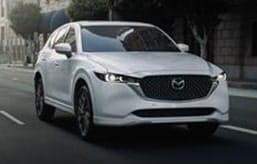- Bold design packs super aerodynamic efficiency
- Shares the Ioniq 5's platform, with multiple battery pack/motor configurations
- Maximum range will likely be over 350 miles
- Introduces the first Ioniq 6 generation for 2023
Driven: 2023 Hyundai Ioniq 6 Takes Direct Aim at Tesla Model 3
The Ioniq 5's sleeker new sibling has it out for the EV sedan king
What is the Ioniq 6?
Hyundai made a splash this year with the retro-inspired Ioniq 5, the automaker's first vehicle designed to be electric from its inception. We're huge fans of the Ioniq 5 — it currently sits at the top of our rankings of the best luxury electric SUVs. Even though the Ioniq 5 is pretty new, its overall excellence made us wonder what's next for the burgeoning Ioniq sub-brand.
Am I Ready for an EV?
- EV ownership works best if you can charge at home (240V outlet)
- Adding a home charging system is estimated to cost $1,616 in
- Edmunds is partnering with Treehouse, an independent provider of home EV installation services. Learn more about the installation services partnership
We now have the answer. Hyundai's next electric vehicle is aptly named the Hyundai Ioniq 6. And we just traveled all the way to South Korea to drive it. The compact EV sedan space is occupied entirely by the Tesla Model 3 at the moment, so it's about time another competitor gets in the mix.
The 2023 Hyundai Ioniq 6 is an ultrasleek sedan built on the same Electric Global Modular Platform (E-GMP) that underpins the Ioniq 5. It also uses some of the same design elements that give the Ioniq 5 its unique looks — namely the pixelated headlight and taillight clusters — before really going off in its own direction.
There's really no getting around the fact that the Ioniq 6 looks downright strange. Its exterior is an amalgamation of styling cues from other cars. The front end looks like a Polestar 2 with a slim grille and first-generation Ford Focus headlights. The profile and pinched rear evoke the Mercedes CLA and CLS and the Infiniti J30, with a Prius-like mid-window spoiler thrown in for good measure.
It's not terribly cohesive, but we suppose some sacrifices had to be made to achieve the Ioniq 6's ultra-low 0.21 drag coefficient. For reference, that would make the Ioniq 6 only slightly bulkier than the world's most aerodynamic production car, the Mercedes-Benz EQS. And as we found out on the road, this sleek form factor does great things for the car's range.
What's under the Ioniq 6's hood?
The Ioniq 5 and Ioniq 6 share a platform, so it's no surprise that the two also draw from the same set of powertrains. Like its smaller SUV stablemate, the Ioniq 6 comes standard with a short-range battery pack and rear-wheel drive — though it does have a smaller capacity of 53 kWh compared to the Ioniq 5's 58-kWh pack. The standard Ioniq 6 packs 149 horsepower and 258 lb-ft of torque — equal torque, but just shy of the base Ioniq 5's 168 ponies.
This new EV feels more alive when you opt for the 77.4-kWh pack. Not only does it have more range than the base model, but it also includes a larger rear motor producing 225 horsepower. Selecting all-wheel drive adds another motor up front, with a combined 320 hp and 446 lb-ft of torque from both sources. Hyundai says this top-spec model can accelerate from 0 to 60 mph in 5.1 seconds, but we think it will be even quicker than that, based on our 4.7-second run in an AWD Ioniq 5.
How about range and charging?
The EPA has yet to rate the Ioniq 6, but we can form some guesses from the car's official WLTP cycle numbers. Based on those figures, it wouldn't surprise us to see over 300 miles for the AWD version and potentially 350 miles for the long-range RWD. These are considerable gains over the Ioniq 5.
Hyundai says the long-range battery/RWD combo is good for roughly 381 miles per the more generous European WLTP standard — that's 66 miles better than the Ioniq 5's best WLTP range number. For reference, the Ioniq 5's EPA-estimated range is 220 miles with the standard pack, 303 miles with rear-wheel drive and the long-range battery, and 256 miles with the AWD powertrain.
As you'd expect, the slipperier Ioniq 6 is said to be more energy-efficient too — Hyundai's estimate of about 22.5 kWh/100 miles would put the most efficient Ioniq 6 variant (smaller battery, RWD, 18-inch wheels) near the top of the charts among current EVs.
As with its crossover counterpart, the Ioniq 6 sedan's 800-volt architecture allows it to use the speediest DC fast-charging equipment on the market. When plugged into one of the growing number of 350-kW ultrafast chargers, the Ioniq 6 can recharge from 10% to 80% in 18 minutes — just enough time to grab coffee from Starbucks at rush hour. A vehicle-to-load function (or V2L) means that you can power external devices, including other EVs.
How does the Ioniq 6 drive?
We have driven the Ioniq 6, but we're going to start with a caveat here. While South Korea is a fun adventure on paper, the actual result was a driving route absolutely littered with speed cameras and Los Angeles-shaming traffic levels. The truth is that we had the Ioniq 6 under 50 miles per hour the entire trip. Some time on our Edmunds real-world testing route is needed for the full story.
We spent our time piloting the most powerful Ioniq 6 (for now), the dual-motor all-wheel-drive version with 320 hp and 446 lb-ft. Through a series of very short acceleration bursts, the Ioniq 6 was brisk, akin to most EVs in this growing segment. We're thrilled to get our hands on the eventual Ioniq 6 N, but for now this version of the car is quick for everyday driving. And if traffic slows you down like it did us, liven things up with the active sound profile to make fun spaceship noises when you press the go pedal.
Like in the Ioniq 5, we love that Hyundai offers a range of brake regeneration levels with this new EV. The steering wheel-mounted paddles allow you to select between several levels of regen, from none to one-pedal driving. This means the car will come to a full stop without having to hit the brakes. One-pedal driving maximizes range and maintains the life of the car's stoppers over time.
How comfortable is the Ioniq 6?
It didn't take long to get nice and cozy in the Ioniq 6's leather-wrapped seats. They offer adequate support, and the material itself is plush to the touch. On our loaded test car, heating and ventilation are also along for the ride, making things even better. And there is plentiful legroom for both rows of passengers, again thanks to that long wheelbase.
We were pleasantly surprised by the Ioniq's supple suspension tuning. Some EVs with their massive body weight can crash down hard over bumps in the road, but the Hyundai had great manners the entire time — and trust us, there were plenty of speed bumps to test. This was a Korean-spec car, so there is a chance that the U.S.-market version has different tuning. But we'd like things to remain similar.
The Ioniq 6 also did a great job keeping exterior noise to a minimum. Granted, we never reached a healthy highway speed to stress-test wind noise, but city driving caused no issue. This car offers a great space to escape the hustles and bustles of a thriving city like Seoul.
How's the Ioniq 6's interior?
The Ioniq 6's cabin is more muted than the bodywork. In fact, it's not too dissimilar to the Ioniq 5's interior, albeit with more flair. The steering wheel looks essentially the same, as do the dual 12-inch digital instrument panel and central touchscreen that share a single housing. However, the Ioniq 6 features more dramatic ambient lighting and a fixed center console that is flat enough to be used as a tabletop.
A key change in the Ioniq 6 comes in the form of less rear headroom, an unavoidable consequence of its tapering roofline relative to the squared-off Ioniq 5. Some of the tallest people in our group sat in the back seat without scraping the ceiling, although it was a close call every time. Contrasting this is the available legroom, which is fantastic even for those well into the 6-foot range. Hyundai uses sustainable materials throughout the cabin, though vegan-unfriendly leather does cover the seats in some models.
We've already seen the Ioniq 6's new ambient lighting strips that give the interior an elegant look. You can choose between 64 colors, and the system offers a dual-color split so you can tailor the cabin environment to your liking. There's even a Speed Sync Lighting mode that increases the brightness of the ambient lighting as you dig into the accelerator.
The advanced driving aids available on the Ioniq 5 are available here as well. Features like adaptive cruise control, lane centering assistance, front and rear cross-traffic alert with braking, and evasive steering assistance when changing lanes are all available.
How's the Ioniq 6's tech?
From a hardware perspective, things in the Ioniq 6 are very familiar. That means twin 12-inch displays, surrounded by a neat metal housing. Both Apple CarPlay and Android Auto smartphone integration is available, though you'll have to plug in to use them. Thankfully, the car has both USB-A and USB-C ports to accommodate all of your phone cord needs. As in the Ioniq 5, the user interface is a mixture of physical buttons and intuitive touchscreen menus.
Hyundai made some exciting improvements to the Ioniq 6's tech suite. This is the first car in the brand's lineup to get over-the-air (OTA) updates. Enhancements can be made to not only the software but also to the car's hardware including the battery. In a segment founded by the Tesla Model 3, the OTA capabilities are impressive, to say the least.
Dig into the menus and there are some fun things to play with like the new EV tune-up feature. This customizable drive mode allows you to change things like the steering feel, acceleration sensitivity and even the horsepower output.
Edmunds says
The 2023 Hyundai Ioniq 6 is a fun mix of avante-garde styling and impressive technology, and the combo might be enough to sway people away from the Model 3. The right price and a confirmed stellar EPA range will make that situation much more probable.








 by
by